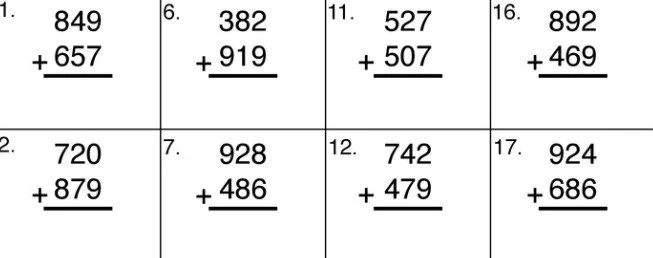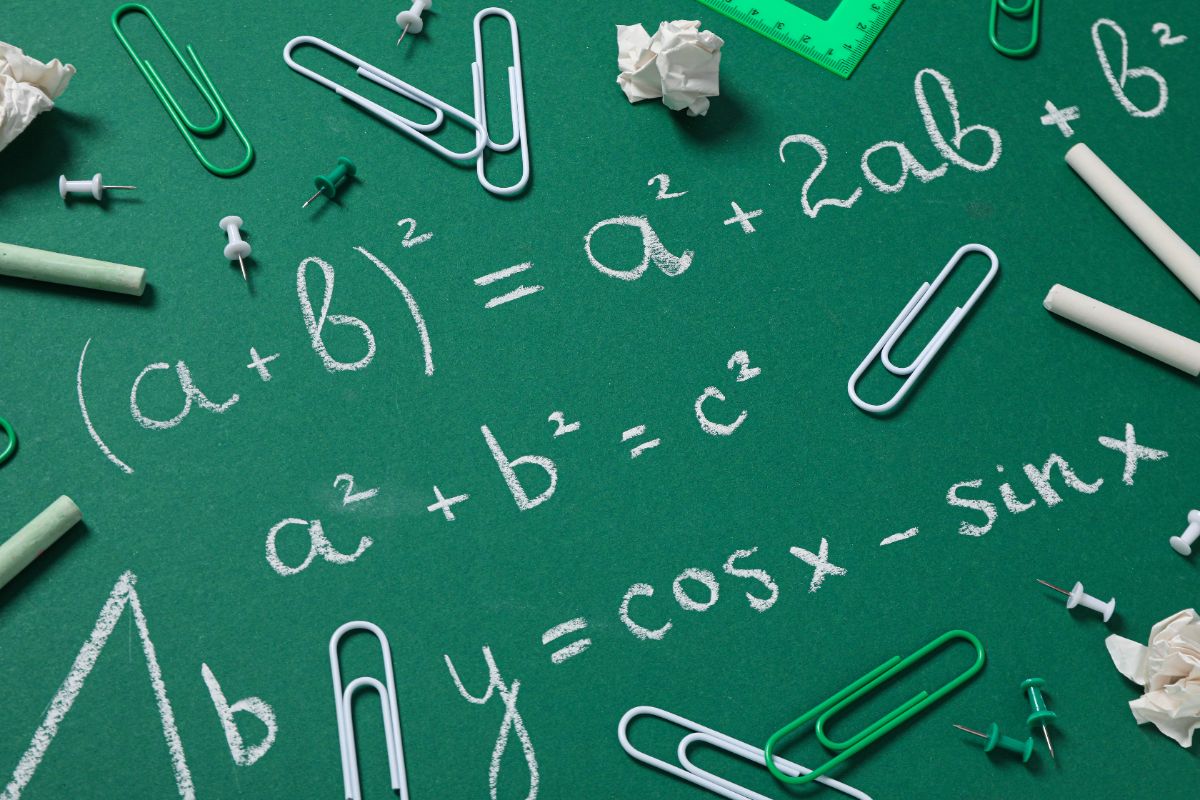In textbooks, you often see a worked example starting a set of practice problems. This is common for arithmetic problems in elementary textbooks but what about with older students? Does sharing worked examples for complex problems lead to increased math learning? A recent article attempts to answer this question by analyzing the body of past research. But as with most research-based articles, the conclusions of this meta-analysis lead to more questions.

What are worked examples?
Worked examples are exactly as you think. They are example problems showing how to be solved. Example problems are used for arithmetic, algebra, geometry, and statistics. Pick up any math textbook and you will likely see worked examples presented.
A classic study by Sweller and Cooper (1985) demonstrated that studying worked solutions was effective for increasing students’ math learning. The worked examples helped with solving structurally identical problems faster and with fewer errors than when worked examples were not provided. Despite limited experimental research at the time, the Institute of Education Sciences (IES) recommended using worked examples in math to improve student learning. Since the IES publication in 2007, there have been several additional research studies on the effect of worked examples on student learning.
Worked examples can take many different forms like correct or examples. They can include explicit explanations for how the solution works or does not work. There can be self-explanation prompts that attempt to direct students’ thinking about how to complete similar problems. Worked examples can be used when students are acquiring new skills or when they are practicing skills recently acquired from other means of instruction. The recent article “A meta-analysis of the worked examples effect on mathematics performance” provides an update on worked examples and their various forms and how they can best be used in a math classroom to promote student learning.
The Meta Analysis
To quantify the overall effect of worked examples in math, the authors completed the first known meta-analysis of this topic. They found over 8,000 studies, but due to the strict limitations (math subject, quantitative, worked examples as a variable, etc.) they included only 43 articles representing 55 studies. All of the studies used posttest performance as compared with pretest results as a measure of student learning. Most of the studies had participants at or above middle school with content of algebra or above. The strict limitations for applicable studies meant that the authors were able to effectively combine study results and determine that the use of worked examples has a significant overall positive effect on students’ learning.
Analyzing different forms of worked examples, the authors found that the use of correct examples leads to increased learning over incorrect examples either alone or in combination with correct examples. The use of self-explanation prompts had a significant overall negative effect on learning, however, there was limited information on the details of these self-explanation prompts within the research articles examined. It could be that the prompts were not high quality or led to increased cognitive demands which may have reduced overall learning. The timing of using worked examples whether during acquisition of new knowledge or during practice after instruction, was not significant. It is of note that none of the studies had timing as an experimental variable, rather each study used worked examples in only one way or the other.
The conclusion from this meta-analysis is that there is a positive and moderate correlation between the use of correct worked examples and students’ learning of math, as measured by increased performance on a posttest. So, we should provide students with correct worked examples to study, right? As with most broad conclusions, it depends on the situation.
Measurements of Learning
Most experiments on the psychology of learning measure knowledge acquisition through pre-test / post-test performance. However this is not a practical way of measuring learning in the classroom as giving an extensive pre-test is at best a waste of time and at worst a precursor to teaching to the test. So, we must be cautious with transferring conclusions from psychology of learning studies to the classroom.
The literature on math learning discusses three different types of knowledge. The first is procedural knowledge - for example, how to solve a quadratic equation. The second is conceptual or how the components of the quadratic equation are represented on a graph. The third is transfer – the ability to utilize current knowledge in different domains. For example, using knowledge of solving quadratic equations to solve other polynomials or applying the quadratic equation to practical situations.
Many individual studies in math education literature measure these three types of learning: procedural, conceptual, and transfer; with post-tests addressing each types. However, the meta-analysis described in this blog combined different studies and so we cannot assume that each of these types of learning were considered. Indeed, if we are talking about worked examples, it is likely that the studies addressed only procedural knowledge and not conceptual or transfer.
Procedural knowledge is foundational to understanding math. Students need to develop fluency with procedures before they can extend their learning to concepts and transfer. Initially supporting students in learning procedures can reduce their cognitive load, saving their learning effort and time for developing the more challenging conceptual and transfer knowledges.
Implications for the classroom
“There is a positive and moderate correlation between the use of correct worked examples and students’ learning of math” — Arlene Vinion Dubiel
The results of the meta-analysis indicated that using correct worked examples of problems leads to increased learning by students of various ages and across math topics. However, there are questions that remain. First, as mentioned above, the positive effect of worked examples is likely limited to developing procedural fluency, not conceptual knowledge or transferability. The types of knowledge gained would require an in-depth analysis of how learning is measured in each of the studies analyzed. Second, the reason for using worked examples is to reduce students’ cognitive load. Cognitive load theory is a developing field of study and how this theory functions in a classroom has not yet been well studied.
A third remaining question is when to use worked examples – during the knowledge acquisition phase or the practice phase of learning. The implication considering cognitive load theory is that worked examples would be best used during the knowledge acquisition phase. However, it could be that worked examples reinforce learning that has occurred, so would be more beneficial during the practice phase. The current research on the timing of using worked examples is lacking. If you have the inclination to do research, try the timing of using worked examples in your own class. Give worked examples when students are learning and/or when students are practicing and measure whether the different timing leads to better learning.
Permitting students to study worked examples does not appear to be detrimental for learning. Indeed, if students study the features and processes of already worked problem examples, it may help to develop or reinforce existing learning. Increased learning may be measured not only by correctness of problems, but the speed at which students solve problems, or their confidence with being able to solve problems. If you do your own classroom research, consider one or more of these measures of learning.
While providing worked examples do not detract from learning, we will want to be cautious about using them constantly. It is possible that worked examples are effective only for teaching procedural fluency, which is foundational for concept development or transfer. If your learning objectives focus on concepts or transfer (i.e. explain how a quadratic equation fits a graph or identify situations where quadratic equations are used), then provide worked examples and spend time and cognitive effort on concepts and transfer. But if your learning objectives focus on procedural fluency (i.e. solve quadratic equations), then you may consider providing worked examples, but then have students need to demonstrate they can solve equations on their own without the support of worked examples.
Bottom Line
Giving students correct worked examples to study improves math performance! But the details on when to use them and how they work is still being researched. Regardless, it is appropriate to use worked examples when students need to develop procedural fluency before advancing to conceptual knowledge and transferability.
If you are a member of ModernMath, many of our non-Googleable problems have step-by-step solutions that can be used as worked examples.







